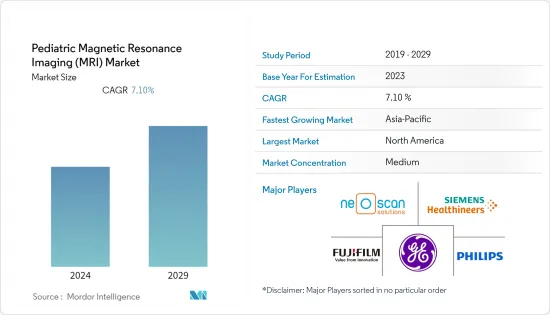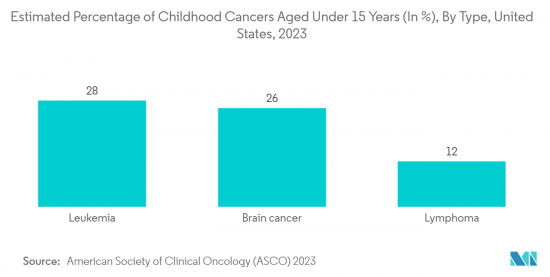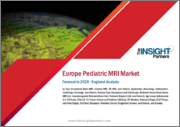
|
시장보고서
상품코드
1407038
소아용 자기공명영상(MRI) 시장 : 점유율 분석, 산업 동향 및 통계, 성장 예측(2024-2029년)Pediatric Magnetic Resonance Imaging (MRI) - Market Share Analysis, Industry Trends & Statistics, Growth Forecasts 2024 - 2029 |
||||||
소아용 자기공명영상(MRI) 시장은 예측 기간 동안 CAGR 7.1%로 추이하며 성장할 전망입니다.

소아 환자의 치료, 특히 COVID-19 팬데믹의 환경에서 특이한 과제는 팬데믹 동안 시장에 악영향을 미쳤습니다. Pediatric Body MRI가 2021년 4월에 발표한 보고서에 따르면 COVID-19를 위해 수많은 MRI 서비스가 평소와는 다른 과제에 직면했습니다. 미국에서 COVID-19의 첫 번째 파동 동안 다수의 MRI 서비스가 대량의 외래 검사를 취소하고 다시 일정 문제를 해결하고 시장에 부정적인 영향을 미쳤습니다. 하지만 같은 출처에 따르면 정부는 COVID-19 감염을 피하기 위해 다양한 공중보건 대책을 마련했으며 건강관리 시설에서 방사선 검사량이 증가하여 시장 성장에 큰 영향을 미쳤습니다.
시장 성장은 조산 및 소아질환 부담 증가, 소아 영상 진단 기술의 기술적 진보 확대, 세계 소아 의료 강화를 위한 공동 연구, 승인, 출시 증가로 인한 것으로 예상됩니다. 예를 들어, 2022년 11월 유니세프는 레바논에서 2021년 639명의 신생아가 생후 28일을 맞이하기 전에 사망했다고 발표했습니다. 이러한 조산에 의한 사망의 높은 부담은 적절한 모니터링과 MRI 진단을 이용하는 것으로 경감하는 것이 가능해, 시장의 견인역이 될 것이 기대됩니다.
또한 정부 이니셔티브는 다양한 캠페인을 통해 이러한 사망을 관리하는 데 도움이 됩니다. 예를 들어, 2022년 11월 레바논 공중 보건부는 유니세프와 공동으로 신생아와 미숙아에 대한 적절한 건강 관리의 중요성에 대한 인식을 높이기 위해 전국 신생아 및 미숙아 캠페인을 시작했습니다. 또한 가족과 의료 제공업체의 중요한 역할에 대해서도 강조했습니다. 따라서 신생아 및 소아과에 관한 이러한 캠페인은 MRI와 같은 장비 수요를 높이고 예측 기간 동안 시장 성장을 촉진 할 것으로 예상됩니다.
그러나 헬륨의 가용성 저하와 설치 비용이 높아 시장 성장을 억제하고 있습니다.
소아용 MRI 시장 동향
예측 기간 동안 암 영역 부문이 시장에서 큰 점유율을 차지할 전망
종양학 응용 분야가 큰 시장 점유율을 차지할 것으로 예상됩니다. 자기공명영상(MRI) 시스템은 소아 환자의 암을 진단합니다. 소아 환자의 암 부담 증가와 시장 진출기업에 의한 전략적 이니셔티브가 MRI 영상 진단 수요를 높여 시장 성장에 기여하고 있습니다.
예를 들어, 미국 암 협회는 2023년 1월에 미국에서는 2023년에 15세 미만의 소아 약 9910명이 암으로 진단된다고 발표하고 있으며, 상당수의 환자가 MRI를 이용한 진단 수요를 높이고 있습니다. 또한 이 출처에 따르면 미국에서는 지난 수십년간 소아암 발생률이 약간 상승하고 있습니다. 이러한 암 환자 증가는 MRI 장치의 이용을 증가시키고 예측 기간 동안 시장을 촉진할 것으로 예상됩니다.
또한 이니셔티브 증가가 시장 성장에 기여하고 있습니다. 예를 들어, 2021년 5월, NeoScan Solutions는 아기용 MRI 스캐너를 발명했습니다. 이 소형 경량 MRI 스캐너는 병원의 소아 병동에 직접 설치할 수 있습니다. 이러한 제품 출시는 MRI 서비스의 광범위한 유통을 증가시키고 시장 성장을 가속할 것으로 예상됩니다.

예측 기간 중 북미가 시장에서 큰 점유율을 차지할 전망
북미에서는 미국이 큰 시장 점유율을 차지할 것으로 예상됩니다. 시장 성장을 뒷받침하는 요인은 소아의 출산과 질병 부담 증가, 소아용 자기공명영상 기술의 기술적 진보의 확대, 동지역에서 소아 의료를 강화하기 위한 제휴와 승인, 출시 증가 등입니다.
시장 기업간 제휴와 합의는 광범위한 애플리케이션을 증가시키고 시장의 큰 성장을 유지할 것으로 예상됩니다. 예를 들어, 2021년 12월 Hyperfine Inc.는 말라위에서 유일한 소아 전문 병원인 Mercy James Centre for Paediatric Surgery &Intensive Care(MJC)를 건설·공동 운영하는 Raising Malawi와 제휴했습니다. 이 파트너십은 하이퍼 파인의 획기적인 휴대용 MRI 시스템을 통해 MJC에서 가능하게 된 중요한 연구에 중점을 둡니다. 이러한 다양한 파트너십을 통한 개척은 이 지역의 연구 시장 성장을 가속할 것으로 기대됩니다.
소아용 자기공명영상(MRI) 산업 개요
소아용 자기공명영상(MRI) 시장은 세계 및 국제 기업의 존재에 의해 다소 통합되어 있습니다. 주요 기업은 시장의 존재감을 높이기 위해 파트너십, 계약, 제휴, 신제품 출시, 지리적 확대, 합병, 인수 등 다양한 성장 전략을 채택하고 있습니다. 이 시장의 주요 기업으로는 Siemens Healthcare GmbH, GE Healthcare, Koninklijke Philips NV, Neoscan Solutions Gmbh, Fujifilm Holdings 등이 있습니다.
기타 혜택 :
- 엑셀 형식 시장 예측(ME) 시트
- 3개월간 애널리스트 서포트
목차
제1장 서론
- 조사 전제 조건 및 시장 정의
- 조사 범위
제2장 조사 방법
제3장 주요 요약
제4장 시장 역학
- 시장 개요
- 시장 성장 촉진 요인
- 조산과 소아질환의 부담증
- 소아 영상 진단 기술의 진보
- 세계의 소아 의료 강화를 위한 제휴, 승인, 출시 증가
- 시장 성장 억제 요인
- 헬륨의 이용 가능성 저하
- 높은 설치 비용
- Porter's Five Forces 분석
- 공급기업의 협상력
- 구매자/소비자의 협상력
- 신규 참가업체의 위협
- 대체품의 위협
- 경쟁 기업간 경쟁 관계의 강도
제5장 시장 세분화(시장 규모)
- 유형별
- 기능적 MRI
- 4D MRI
- 기타 유형
- 용도별
- 종양학
- 신경학
- 심장병학
- 정형외과
- 기타
- 최종 사용자별
- 병원
- 진단센터
- 기타 최종 사용자
- 지역별
- 북미
- 미국
- 캐나다
- 멕시코
- 유럽
- 독일
- 영국
- 프랑스
- 이탈리아
- 스페인
- 기타 유럽
- 아시아 태평양
- 중국
- 일본
- 인도
- 호주
- 한국
- 기타 아시아 태평양
- 중동 및 아프리카
- GCC
- 남아프리카공화국
- 기타 중동 및 아프리카
- 남미
- 브라질
- 아르헨티나
- 기타 남미
- 북미
제6장 경쟁 구도
- 기업 개요
- Neoscan Solutions Gmbh
- Siemens Healthcare GmbH
- GE HealthCare
- Koninklijke Philips NV
- Advanced Imaging Research dba SREE Medical Systems
- LMT Medical Systems GmbH
- Fujifilm Holdings Corporation
- Hyperfine
- Aspect Imaging Ltd
- Time Medical Holding
- Esaote SpA
- NORAS MRI products GmbH
제7장 시장 기회 및 향후 동향
LYJ 24.01.29
The pediatric magnetic resonance imaging (MRI) market is expected to register a CAGR of 7.1% over the forecast period.
The unique challenges of caring for pediatric patients, particularly in the setting of the COVID-19 pandemic, adversely impacted the market during the pandemic. As per the report published by Pediatric Body MRI in April 2021, numerous MRI services faced unusual challenges because of COVID-19. During the first wave of COVID-19 in the United States, numerous MRI services dealt with the problem of large-volume outpatient examination cancellations and rescheduling, adversely impacting the market. However, according to the same source, the government took various public health measures to avoid COVID-19 infection, which increased the radiology examination volumes in healthcare facilities and significantly impacted the market growth.
The market's growth can be attributed to the increasing burden of premature births and pediatric diseases, growing technological advancements in pediatric imaging techniques, and rising collaborations, approvals, and launches to enhance pediatric care worldwide. For instance, in November 2022, UNICEF stated that in Lebanon, 639 newborns died before turning 28 days old in 2021. This high burden of preterm deaths can be reduced using proper monitoring and MRI diagnosis, which is expected to drive the market.
Furthermore, government initiatives can help to manage these deaths with various campaigns. For instance, in November 2022, the Ministry of Public Health, Lebanon, in partnership with UNICEF, launched the National Newborn and Prematurity Campaign to raise awareness of the importance of proper health care for newborns and premature babies. It also highlighted the essential role of family and healthcare providers. Hence, these campaigns on newborns and pediatrics increase the demand for devices like MRI and are expected to boost the market's growth over the forecast period.
However, declining helium availability and high installation costs are restraining the market growth.
Pediatric Magnetic Resonance Imaging (MRI) Market Trends
Oncology Segment is Expected to Hold a Significant Share in the Market Over the Forecast Period
The oncology application segment is expected to hold a significant market share. Magnetic resonance imaging (MRI) systems diagnose cancer in pediatric patients. The growing burden of cancer in pediatric patients and the strategic initiatives undertaken by the market players are increasing the demand for MRI imaging, contributing to the market growth.
For instance, the American Cancer Society, in January 2023, stated that about 9,910 children in the United States under the age of 15 will be diagnosed with cancer in 2023, a significant number of patients, increasing the demand for diagnosis using MRI. In addition, as per the same source, childhood cancer rates rose slightly over the past few decades in the United States. These rising cancer cases increase the usage of MRI devices and are expected to boost the market over the forecast period.
Furthermore, the increasing initiatives are contributing to market growth. For instance, in May 2021, Neoscan Solutions invented an MRI scanner for babies. The smaller and lighter MRI scanner can be placed directly in the hospital's children's ward. Such product launches increase the widespread distribution of MRI services and are expected to propel the market's growth.

North America is Expected to Hold a Significant Share in the Market Over the Forecast Period
The United States is expected to hold a significant market share within North America. The factors propelling the market growth are the increasing burden of pediatric births and diseases, growing technological advancements in pediatric imaging techniques, and rising collaborations, approvals, and launches to enhance pediatric care in the region.
The partnerships and agreements among the market players increase the widespread applications and are expected to hold significant growth in the market. For instance, in December 2021, Hyperfine Inc. partnered with Raising Malawi, which built and co-operated Malawi's only specialized pediatric hospital, the Mercy James Centre for Paediatric Surgery & Intensive Care (MJC). The partnership is to highlight the important research made possible at MJC with Hyperfine's breakthrough portable MRI system. Such developments through various partnerships are expected to propel the region's studied market growth.
Furthermore, the establishment of new imaging banks for pediatrics increases the need for MRI devices and likely propels the market. For instance, in March 2022, Holland Bloorview Kids Rehabilitation Hospital's Bloorview Research Institute (BRI) launched a new MRI imaging bank for children with disabilities in Canada. Thus, the market is expected to grow significantly over the forecast period due to the abovementioned developments and establishments.
Pediatric Magnetic Resonance Imaging (MRI) Industry Overview
The pediatric magnetic resonance imaging (MRI) market is slightly consolidated with the presence of global and international players. The key players are adopting different growth strategies to enhance their market presence, such as partnerships, agreements, collaborations, new product launches, geographical expansions, mergers, and acquisitions. Some of the key players in the market are Siemens Healthcare GmbH, GE HealthCare, Koninklijke Philips NV, Neoscan Solutions Gmbh, and Fujifilm Holdings Corporation, among others.
Additional Benefits:
- The market estimate (ME) sheet in Excel format
- 3 months of analyst support
TABLE OF CONTENTS
1 INTRODUCTION
- 1.1 Study Assumptions and Market Definition
- 1.2 Scope of the Study
2 RESEARCH METHODOLOGY
3 EXECUTIVE SUMMARY
4 MARKET DYNAMICS
- 4.1 Market Overview
- 4.2 Market Drivers
- 4.2.1 Increasing Burden of Premature Births and Pediatric Diseases
- 4.2.2 Technological Advancements in Pediatric Imaging Techniques
- 4.2.3 Rising Collaborations, Approvals and Launches to Enhance Pediatric Care Worldwide
- 4.3 Market Restraints
- 4.3.1 Declining Helium Availability
- 4.3.2 High Installation Cost
- 4.4 Porter's Five Forces Analysis
- 4.4.1 Bargaining Power of Suppliers
- 4.4.2 Bargaining Power of Buyers/Consumers
- 4.4.3 Threat of New Entrants
- 4.4.4 Threat of Substitute Products
- 4.4.5 Intensity of Competitive Rivalry
5 MARKET SEGMENTATION (Market Size by Value -USD)
- 5.1 By Type
- 5.1.1 Functional MRI
- 5.1.2 4D MRI
- 5.1.3 Other Types
- 5.2 By Application
- 5.2.1 Oncology
- 5.2.2 Neurology
- 5.2.3 Cardiology
- 5.2.4 Orthopedics
- 5.2.5 Other Application Types
- 5.3 By End User
- 5.3.1 Hospitals
- 5.3.2 Diagnostic Centers
- 5.3.3 Other End Users
- 5.4 Geography
- 5.4.1 North America
- 5.4.1.1 United States
- 5.4.1.2 Canada
- 5.4.1.3 Mexico
- 5.4.2 Europe
- 5.4.2.1 Germany
- 5.4.2.2 United Kingdom
- 5.4.2.3 France
- 5.4.2.4 Italy
- 5.4.2.5 Spain
- 5.4.2.6 Rest of Europe
- 5.4.3 Asia-Pacific
- 5.4.3.1 China
- 5.4.3.2 Japan
- 5.4.3.3 India
- 5.4.3.4 Australia
- 5.4.3.5 South Korea
- 5.4.3.6 Rest of Asia-Pacific
- 5.4.4 Middle East and Africa
- 5.4.4.1 GCC
- 5.4.4.2 South Africa
- 5.4.4.3 Rest of Middle East and Africa
- 5.4.5 South America
- 5.4.5.1 Brazil
- 5.4.5.2 Argentina
- 5.4.5.3 Rest of South America
- 5.4.1 North America
6 COMPETITIVE LANDSCAPE
- 6.1 Company Profiles
- 6.1.1 Neoscan Solutions Gmbh
- 6.1.2 Siemens Healthcare GmbH
- 6.1.3 GE HealthCare
- 6.1.4 Koninklijke Philips NV
- 6.1.5 Advanced Imaging Research dba SREE Medical Systems
- 6.1.6 LMT Medical Systems GmbH
- 6.1.7 Fujifilm Holdings Corporation
- 6.1.8 Hyperfine
- 6.1.9 Aspect Imaging Ltd
- 6.1.10 Time Medical Holding
- 6.1.11 Esaote SpA
- 6.1.12 NORAS MRI products GmbH














